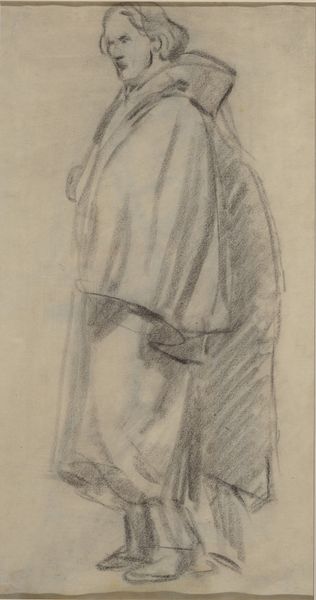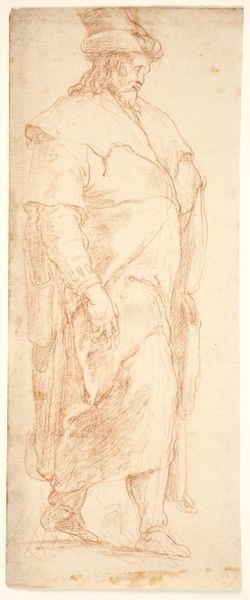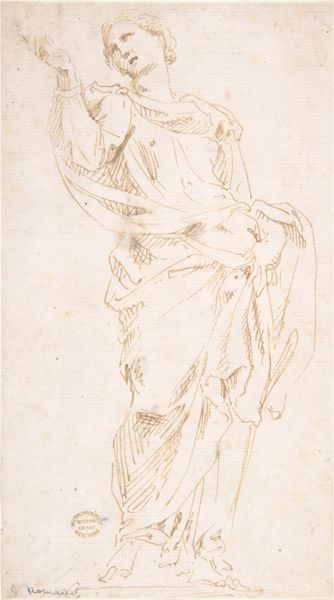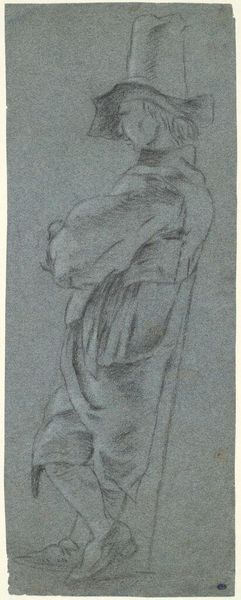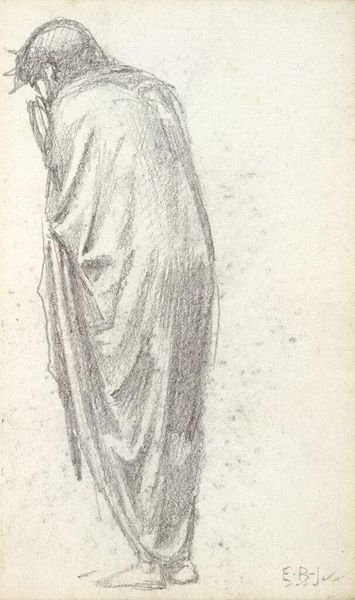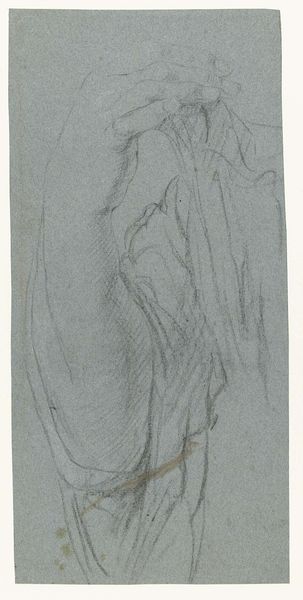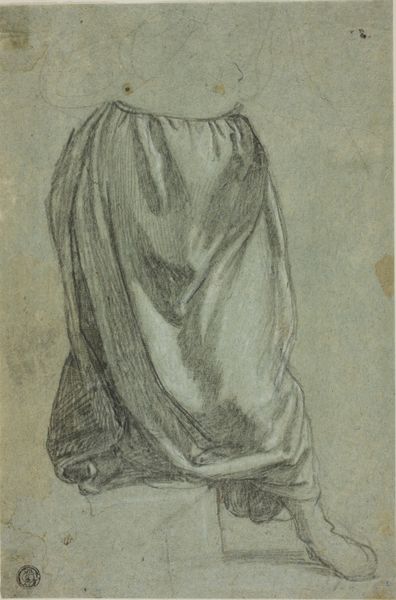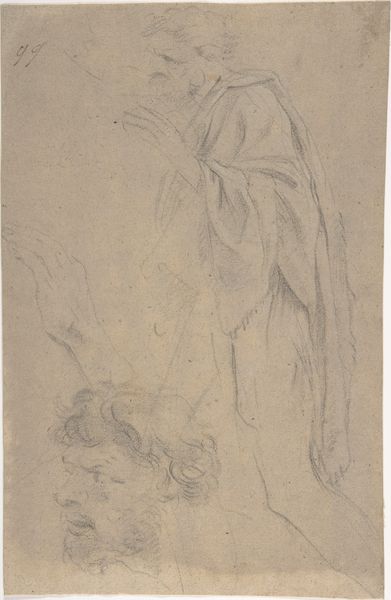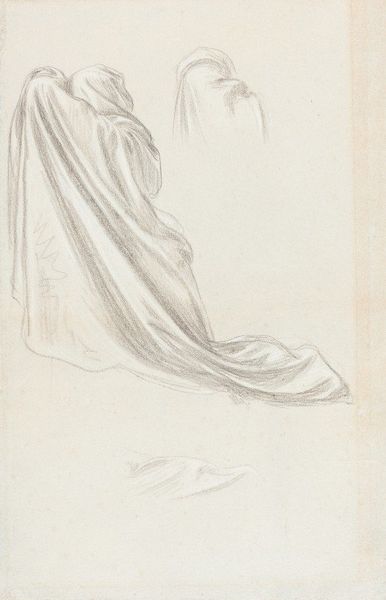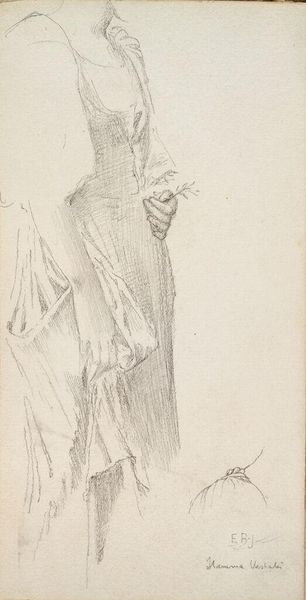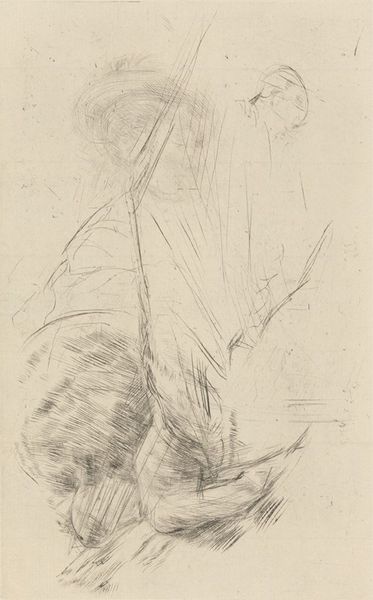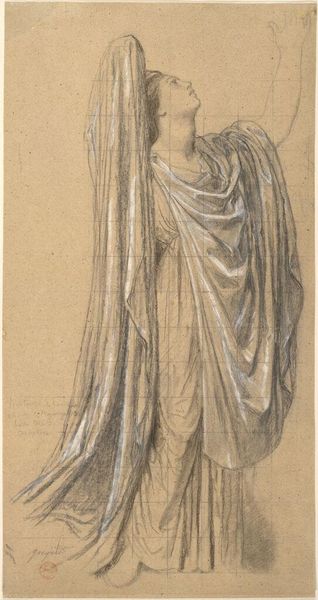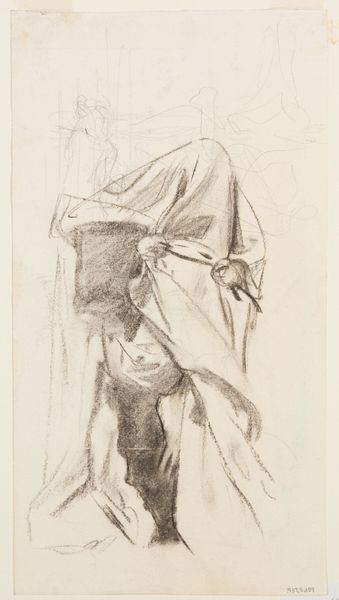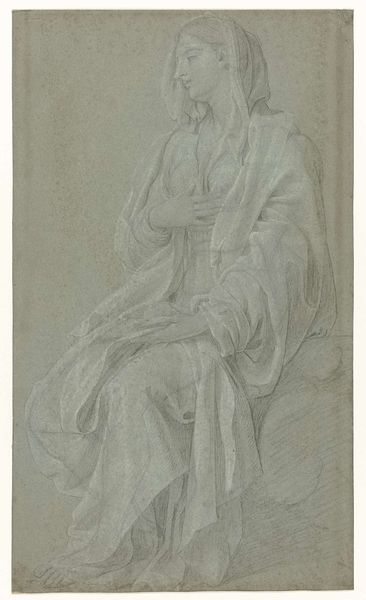
Copyright: Public Domain: Artvee
Curator: What whispers rise from these graphite folds, wouldn't you agree? There's a silence, a waiting, almost like potential energy held within the fabric itself. Editor: The drawing you’re observing is Edgar Degas' "Drapery Study," dating back to 1856. This pencil drawing on paper reveals Degas' meticulous exploration of form. Considering his later engagement with impressionism, the careful modelling and attention to light and shadow suggests academic foundations. Curator: Academic, yes, but also deeply sensual. The way the pencil caresses the paper, creating valleys and peaks of shadow… it feels like more than just studying fabric. It's like an exploration of the secrets that cloth can conceal, the stories it could tell if it could speak. There's this sense of hidden, of what's veiled but suggested. Editor: Drapery studies, a standard academic exercise, enabled artists to realistically depict clothing and enhance their compositions. We often see them by artists who focused on history painting. So it's not necessarily a hidden meaning, but the demonstration of skills that elevate his stature and career. Curator: Maybe, but I always wonder, wasn't there an element of, shall we say, intimate discovery? A play of light and dark to provoke questions, emotions. Think of the paintings throughout history where drapery acts as a protagonist. And those beautiful shadows in particular, aren’t they charged with emotion? It's that very ambiguity that holds the power, wouldn't you agree? Editor: The Romantics did aim for emotional impact but this may have been primarily aimed at his mastery. This drawing offered practice in rendering realism, to build the believable, almost sculptural forms that were vital to successful history paintings or portraits, even today with painting on textiles a popular subject. Curator: Even today! The enduring pull of shadows, the language of light – it all speaks to a very visceral understanding. So even if the technique is rooted in tradition, there's always space for the soul to slip through, and I believe it has here. What do you think now that you have taken the time to gaze with more careful intent? Editor: This close-looking exercise shows Degas testing and solidifying fundamental practices. Looking closer it reveals a dedication, so the emotional connection comes down to its historic significance. Curator: Agreed, and it's nice we reached a meeting of the minds as time came for this chapter to close.
Comments
No comments
Be the first to comment and join the conversation on the ultimate creative platform.
